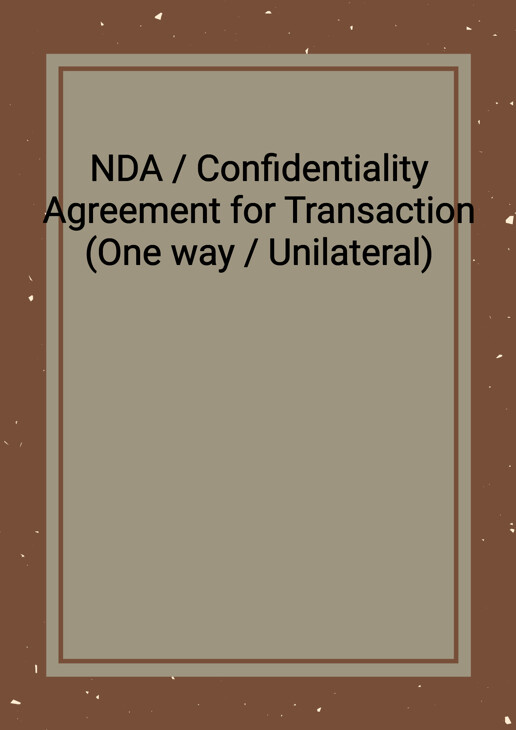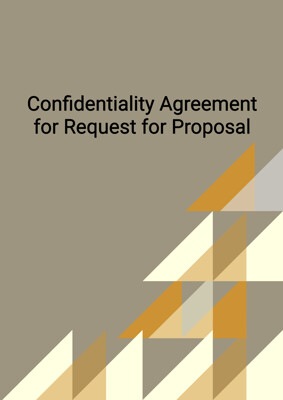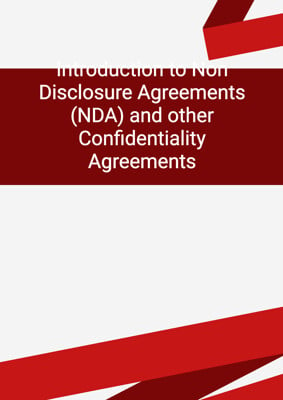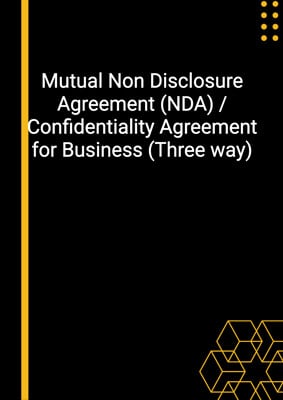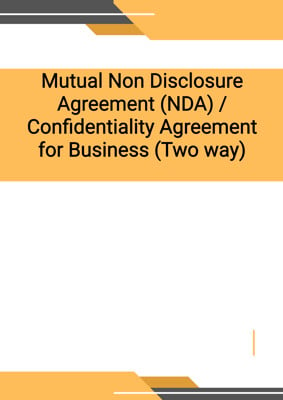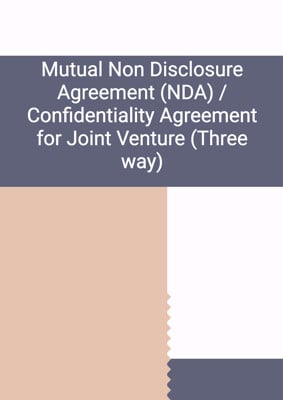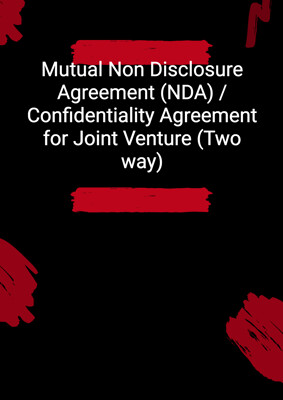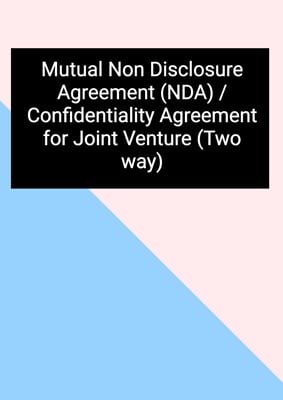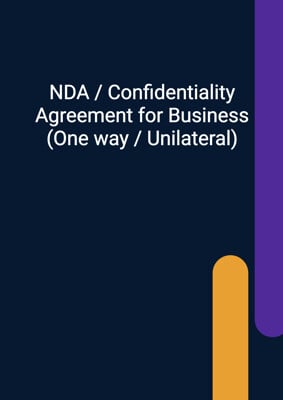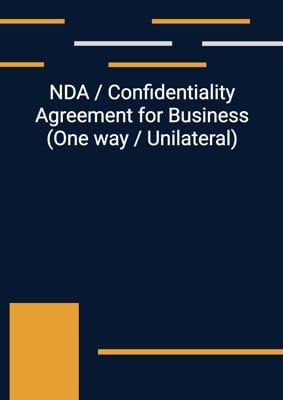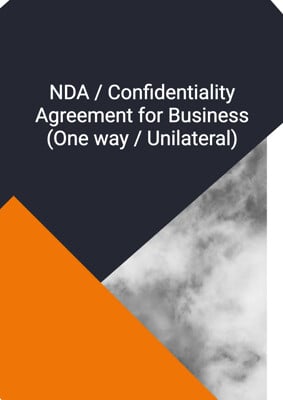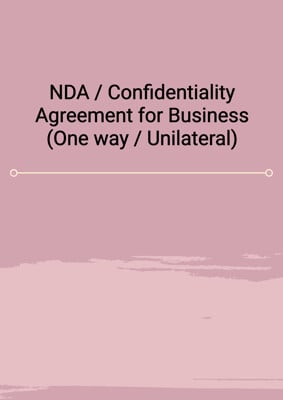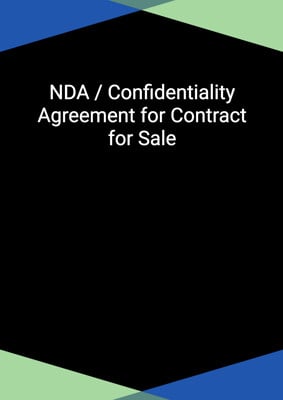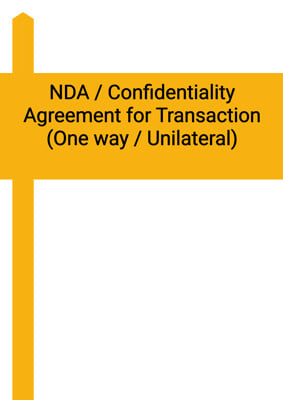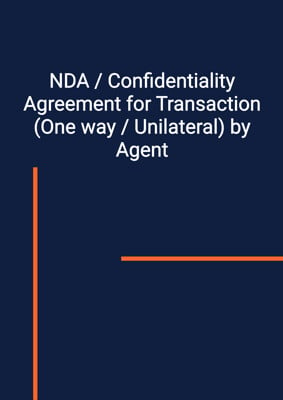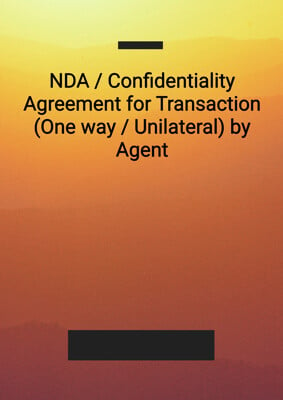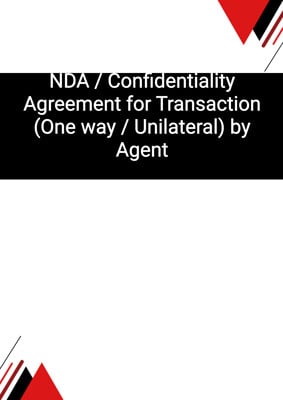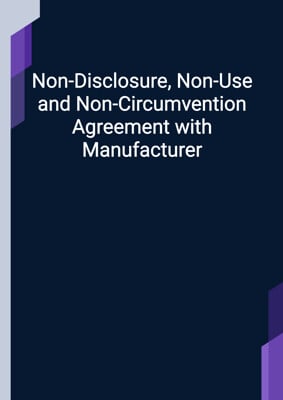How to Tailor the Document for Your Need?
01
Create Document
Fill in the details of the parties. You can click the "Fill with Member’s Information" button to complete it with information saved to your account.
02
Fill Information
Please fill in any additional information by following the step-by-step guide on the left hand side of the preview document and click the "Next" button.
03
Get Document
When you are done, click the "Get Document" button and you can download the document in Word or PDF format.
04
Review Document
Please get all parties to review the document carefully and make any final modifications to ensure that the details are correct before signing the document.
Document Preview
Document Description
This document is a Non-Disclosure Agreement (NDA) or Confidentiality Agreement for a transaction, specifically a one-way or unilateral agreement. The importance of this document lies in its ability to protect confidential information shared between the parties involved in the transaction. The document begins with a general introduction, stating that the agreement is being entered into by Party 1 (the discloser) and Party 2 (the disclosee) for the purpose of sharing confidential information related to the transaction. The agreement covers any information disclosed by the discloser or its connected persons to the disclosee or its representatives, whether orally, in writing, or in any other form.
The document includes several sections, each serving a specific purpose. The interpretation section defines key terms used throughout the agreement, such as connected persons, group, information, purpose, representatives, and writing. The obligations of confidentiality section outlines the responsibilities of the disclosee regarding the information shared. These obligations include maintaining the confidentiality of the information, using it exclusively for the purpose stated in the agreement, and not copying or reproducing any part of the information without reasonable necessity.
The confidentiality measures section emphasizes the importance of maintaining the confidentiality of the disclosed information. The disclosee is required to only disclose the information to its representatives who need access to it for the purpose and on the condition that they also maintain confidentiality. The disclosee must apply security measures and a degree of care to the information that is at least equal to the measures applied to its own confidential information. If the information is stored electronically, the disclosee must ensure that it is secured and access is restricted.
The excepted information section specifies certain circumstances in which the obligations of confidentiality do not apply. For example, if the information becomes lawfully available to the public, was previously known to the disclosee, was disclosed by a third party with the right to do so, or was independently developed by the disclosee without the discloser's information. Additionally, if the disclosee is legally required to disclose the information, it is entitled to do so.
The return of information section states that upon request by the discloser, the disclosee must return or destroy all hard copy documents and materials containing the information. If the information is stored electronically, the disclosee must ensure that it is either destroyed or secured to prevent future access or copying. However, reports, notes, or other materials prepared by the disclosee or its advisers that incorporate the information are not required to be returned or destroyed.
The disclaimer and warranty section clarifies that the discloser reserves all rights in its information and that no rights or obligations other than those expressly granted in the agreement are implied. The discloser warrants its right to disclose the information and authorizes the disclosee to use it for the purpose stated. The agreement does not obligate either party to enter into the transaction contemplated.
The confidentiality section emphasizes that the existence and nature of the agreement should be kept confidential. Any announcement or circular relating to the agreement must be approved by both parties. However, the disclosee is allowed to contact its existing customers, suppliers, contractors, or sub-contractors in the ordinary course of its business, as long as it does not refer to the transaction.
The agreement includes provisions for termination, exclusivity, remedies, rights, assignment, entire agreement, no license, governing law and jurisdiction, notices and service, and no rights under contracts for third parties. The termination clause specifies the duration of the agreement, which is determined by the termination of discussions or the execution of documents governing the purpose. The exclusivity clause restricts both parties and their connected persons from discussing or negotiating the transaction with any other parties during a specified exclusivity period. The remedies clause acknowledges that damages would not be an adequate remedy for a breach of the agreement and provides for alternative remedies. The rights clause states that the rights, powers, and remedies provided in the agreement are cumulative and not exclusive of any rights provided by law.
The assignment clause prohibits either party from assigning any rights or obligations under the agreement. The entire agreement clause confirms that the agreement represents the entire understanding between the parties regarding the subject matter. It also clarifies that neither party has relied on any representations, warranties, or undertakings not expressly set out in the agreement. The no license clause states that the agreement does not grant any rights to either party under intellectual property laws.
The governing law and jurisdiction clause specifies the applicable law and jurisdiction for any disputes arising from the agreement. The notices and service clause outlines the methods of delivering notices, such as hand delivery, email, or post. The addresses of the parties for the purpose of delivering notices are provided. Finally, the no rights under contracts for third parties clause states that only the parties to the agreement have the right to enforce its terms.
In summary, this NDA or Confidentiality Agreement for a transaction is a comprehensive document that establishes the obligations of confidentiality and the terms and conditions for sharing confidential information between the discloser and the disclosee. It covers various aspects of confidentiality, including obligations, exceptions, return of information, and remedies. The agreement also addresses other important matters such as exclusivity, governing law, and jurisdiction.
How to use this document?
To use this NDA or Confidentiality Agreement for a transaction, follow these steps:
1. Interpretation: Familiarize yourself with the key terms used in the agreement, such as connected persons, group, information, purpose, representatives, and writing. Understand their meanings as defined in the agreement.
2. Obligations of Confidentiality: Understand your responsibilities as the disclosee regarding the information shared. Maintain the confidentiality of the information and use it exclusively for the purpose stated in the agreement. Only copy or reproduce the information if reasonably necessary.
3. Confidentiality Measures: Take necessary measures to maintain the confidentiality of the disclosed information. Only disclose the information to your representatives who need access to it for the purpose and ensure they also maintain confidentiality. Apply security measures and a degree of care to the information that is at least equal to the measures applied to your own confidential information.
4. Excepted Information: Be aware of the circumstances in which the obligations of confidentiality do not apply. If the information becomes public, was previously known to you, was disclosed by a third party, or was independently developed by you without the discloser's information, the obligations may not apply.
5. Return of Information: Upon request by the discloser, return or destroy all hard copy documents and materials containing the information. If the information is stored electronically, either destroy it or secure it to prevent future access or copying.
6. Disclaimer and Warranty: Understand that the discloser reserves all rights in its information. No rights or obligations other than those expressly granted in the agreement are implied. The agreement does not obligate either party to enter into the transaction contemplated.
7. Confidentiality: Keep the existence and nature of the agreement confidential. Obtain approval from both parties for any announcement or circular related to the agreement. You may contact your existing customers, suppliers, contractors, or sub-contractors in the ordinary course of your business, as long as you do not refer to the transaction.
8. Termination and Exclusivity: Familiarize yourself with the termination provisions and the duration of the agreement. Understand the restrictions on discussing or negotiating the transaction with other parties during the exclusivity period.
9. Remedies: Acknowledge that damages would not be an adequate remedy for a breach of the agreement. Be aware of the alternative remedies available.
10. Rights: Understand that the rights, powers, and remedies provided in the agreement are cumulative and not exclusive of any rights provided by law.
11. Assignment: Do not assign any rights or obligations under the agreement without prior consent.
12. Entire Agreement: Understand that the agreement represents the entire understanding between the parties regarding the subject matter. Rely only on the representations, warranties, and undertakings expressly set out in the agreement.
13. No License: Do not assume that the agreement grants any rights under intellectual property laws. Seek appropriate licenses or permissions separately.
14. Governing Law and Jurisdiction: Be aware of the applicable law and jurisdiction for any disputes arising from the agreement.
15. Notices and Service: Follow the specified methods for delivering notices and ensure that the addresses of the parties are accurate.
By following these steps, you can effectively use this NDA or Confidentiality Agreement for a transaction and protect the confidential information shared between the parties involved.
Not the right document?
Don’t worry, we have thousands of documents for you to choose from:
